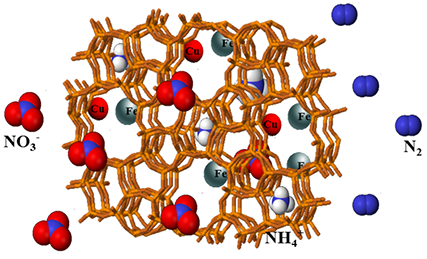
Development of Nanoparticle-Nanotube based Catalytic Systems / Polymer Composites for Wastewater Treatments
In the present day most of the nations are facing drinking water problems and conditions are very severe especially in developing countries. Demand for clean water has become a critical challenge to meet as the available supplies of freshwater are depleting due to (i) population growth, (ii), extended droughts and (iii) increase in water pollutants in open water bodies. The major pollutants found in wastewater can be identified as organic pollutants (PAHs, PCBs, DEHP, LAS and NPE), toxic inorganic chemicals, including heavy metals (Cd, Cr, Hg, Pb and Zn) and oxyanions (nitrate, phosphate), and pathogènes. In our lab, we combine molecular level insights from aqueous phased studies and knowledge of nanomaterial to develop novel catalysts and polymer composites as treatment systems to remove above pollutants, with a specific focus on more soluble toxic inorganic chemicals (nitrates & phosphates and heavy metals) and pathogens. Our catalytic systems are based on various nanomaterial, including metal oxides with porous structures and multi-wall carbon nanotubes (MWCNTs), that have shown a greater potential in wastewater treatment due to their higher surface area and ability tailor the surface properties. Having a three dimensional hollow structure to these materials further improves catalytic efficiency and selectivity. These new catalytic systems are more robust and equipped with photo-enhanced recycling mechanisms to ensure their longer usage.
We also conduct research to develop polymer composites of carbon fibers to remove wastewater pathogens. The World Health Organization recommended that any water intended for drinking should contain fecal and total coliform counts of zero in 100 mL sample. When either of these groups of bacteria is encountered in a sample, immediate investigative action should be taken. Our goal here is to develop single stage, cost-effective processes using polymer adsorber with carbon nanofibers. In these novel methods, not only the nanofibers provide a higher specific surface area, but also the surface properties of the final composite are tailored via surface modification using various pretreatments and introducing monomers with different physicochemical properties such as solubility, miscibility and non-covalent interactions with the target pathogens and molecules.